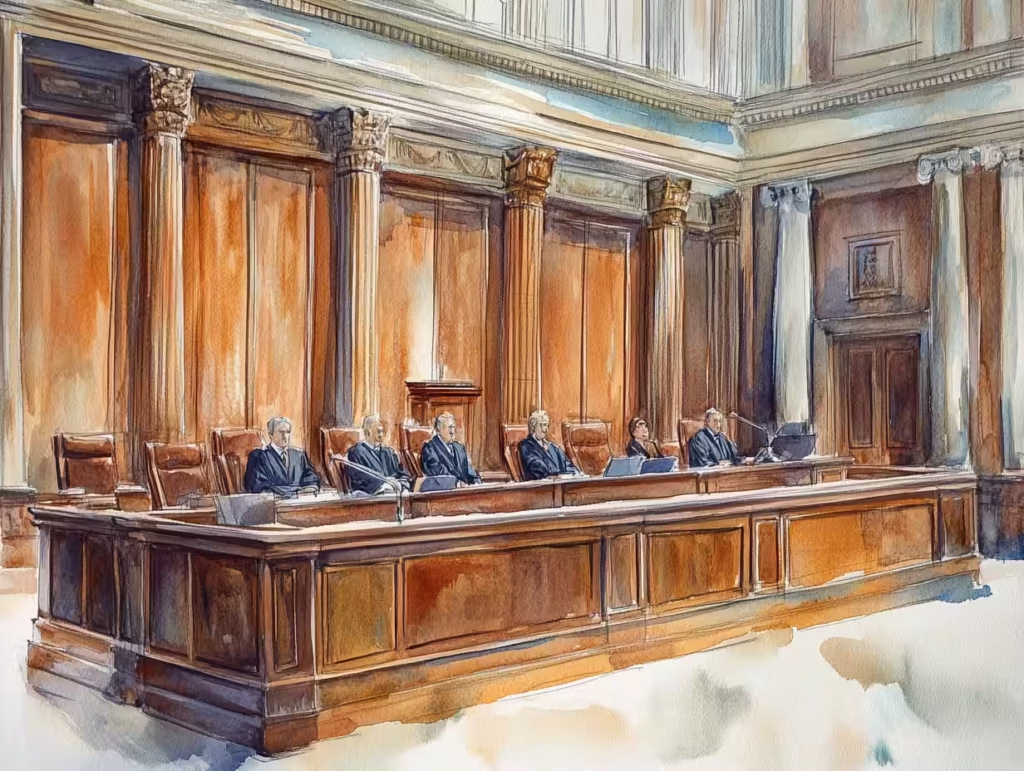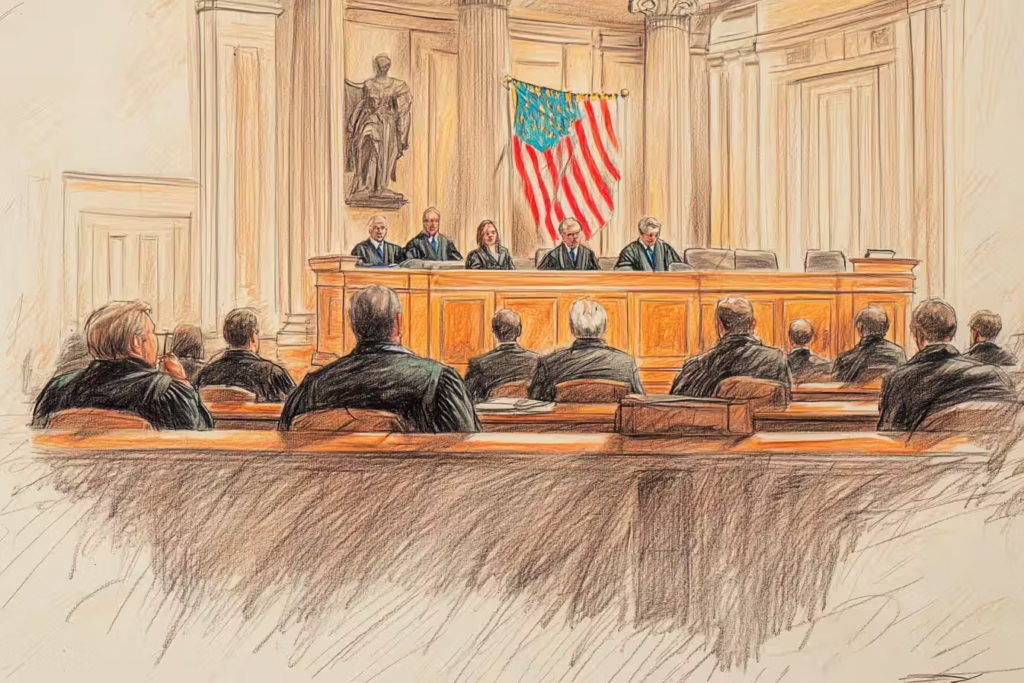A Guide to Understanding the Appellate Process in Utah
Understanding the appellate process in Utah is essential for anyone considering an appeal. Unlike trials, appeals focus on reviewing legal errors in the trial court’s decision rather than reexamining the facts. This process requires a thorough understanding of appellate rules, deadlines, and the unique procedures of Utah’s appellate courts. In this guide, we’ll break down the steps of the appellate process, explain what to expect, and provide insights into how to approach an appeal effectively. Whether you’re seeking to correct a legal error or defend a favorable ruling, this guide will help you navigate the complexities of Utah’s appellate system.
Introduction to The Appellate Process in Utah
The Appellate Process: A Step-by-Step Guide
The appellate process is a crucial aspect of the judicial system in Utah, providing a mechanism for reviewing decisions made by lower courts. This process is designed to ensure fairness and accuracy in the way the law is applied across cases, allowing parties to seek redress through higher court review. Understanding the civil appeals process is essential for anyone involved in litigation, as it can significantly impact the outcome of a case.
1. Filing a Notice of Appeal
The first step in initiating an appeal in Utah is filing a Notice of Appeal. This document serves as a formal declaration that a party intends to challenge the decision made by a lower court. The notice must be filed with the clerk of the district court and must include specific information, such as the names of the parties, the specific judgment being appealed, and the court from which the appeal is taken. Importantly, the Notice of Appeal must be filed within 30 days of the judgment being entered to ensure that the appeal is timely. Under certain statutes, UPEPA for example, the notice of appeal must be filed within 15 days.
Failure to file the notice within this timeframe can result in the loss of the right to appeal. If a litigant misses the 30-day deadline, the court of appeals will conclude it does not have jurisdiction to consider your case. The appellant–the party appealing–must also serve notice to all other parties involved in the case, ensuring that everyone is aware of the impending appeal.
2. Preparing the Appellate Record
After filing the Notice of Appeal, the next step is preparing the appellate record. The appellate record consists of all the documents, evidence, and transcripts from the lower court proceedings that are relevant to the appeal. The appellant must pay for the cost of transcripts and must order the transcripts to be transcribed. The district court record is essential for the appellate court’s review, because it provides the context and information necessary for the court of appeals to evaluate the claims made by the appellant.
The preparation of the record typically involves coordinating with the court reporter to obtain transcripts of hearings or trials and compiling relevant motions, orders, and exhibits. Once the record is finalized, it is submitted to the appellate court, often accompanied by a designation of the record, which outlines the specific documents the appellant wishes to include in the review. The appellant is responsible for compiling a complete record. Missing transcripts may preclude an appellant from meeting his burden of persuasion on appeal.



3. Drafting the Appellate Brief
The next phase in the appellate process is drafting the appellate brief, a critical component that articulates the appellant’s arguments and legal theories. The brief must adhere to specific formatting and content requirements set by the Utah Rules of Appellate Procedure. It typically contains sections such as a statement of the case, questions presented, arguments, and a conclusion.
In crafting the brief, it is vital for the appellant to clearly outline the legal errors they believe the lower court made and explain how these errors affected the outcome of the case. Supporting arguments should be backed by citations to relevant statutes, case law, and evidence from the appellate record. The effectiveness of the brief can significantly influence the appellate court’s decision, making thorough research and persuasive writing essential.
4. Responding to the Brief
Once the appellant has submitted their brief, the opposing party–called the appellee–has the opportunity to respond with their own brief. The appellee’s brief addresses the arguments made by the appellant, defending the lower court’s decision and highlighting any additional legal points that support affirming the ruling. Like the appellant’s brief, the appellee’s brief must comply with specific formatting and content guidelines provided by the Utah Rules of Appellate Procedure. After the appellee files the responsive brief, the appellant may respond in a reply brief. A reply brief is much shorter than an opening or responsive brief and responds directly to the appellee’s justifications for the district court’s rulings.
The interaction between the appellant’s and appellee’s briefs is critical. That interaction frames the issues that the appellate court will consider. The appellee may also file a cross-appeal if they seek to challenge any aspect of the lower court’s decision that they believe is unfavorable to them. Appellee must file a notice of cross-appeal within 14 days of appellant filing their notice of appeal. This allows both parties to present their arguments in a structured manner, promoting a fair review of the case.
5. Oral Arguments
After the briefs have been submitted, the appellate court may schedule oral arguments, providing both parties an opportunity to present their cases and answer the court’s questions. During oral arguments, attorneys for both sides have a set amount of time–15 minutes in the Utah Court of Appeals and 20 minutes in the Utah Supreme Court–to highlight key points from their briefs and answer questions posed by the judges. The court of appeals will only call argument in select cases where it thinks that argument will help the judges in their decision. Many cases are decided without argument in that court. However, the Utah Supreme Court holds argument in every case it hears.
Preparation for oral arguments is crucial. Attorneys essentially block out their calendar and deeply immerse themselves in the case. The attorneys arguing must be the authority in the room considering the facts of the case, the applicable law, and the nuances of the arguments presented in their briefs. They must consider how principles in other areas of law might impact the judges’ decision in this case, and they must be ready to address the weaknesses of their position. Effective oral advocacy can impact the court’s perception of the case and impact the way the case is written. In select instances, it may even sway the judges’ opinions, making this a pivotal moment in the appellate process.


6. The Decision
Once oral arguments are concluded, the appellate court will hold conference and discuss the potential outcome of the case. This conversation can result in various outcomes: affirming the lower court’s ruling, reversing it, or remanding the case for further proceedings. The panel of judges may also decide to write the case each way and see which is stronger. Additionally, a dissent may be so persuasively written that it later becomes the majority opinion of the court.
The court of appeals will typically issue a written opinion, providing a rationale for their decision, which may serve as precedent for future cases. Some cases, however, are decided by Order or by the court issuing a per curiam decision drafted by internal staff attorneys. The timeline for the court’s decision can vary based on the complexity of the case and the court’s docket. Following the decision, the parties may have the option to seek for a motion for rehearing if they believe the court clearly erred on a matter of fact or law or to seek further review in the Utah Supreme Court, particularly in significant cases that raise important legal questions that will apply to a large number of other cases in Utah.
Key Considerations in a Civil Appeal
Standard of Review
One of the most crucial aspects of any appeal is the standard of review that the appellate court will apply when evaluating the lower court’s decision. The standard of review dictates the level of deference that the appellate court gives to the findings and conclusions made by the lower court. There are several standards of review, including correctness, abuse of discretion, and clear weight of the evidence–and each applicable to different types of issues.
For example, questions of law typically involve a correctness standard of review, meaning that the court of appeals will review the issue without any deference to the district court’s ruling. However, many evidentiary issues are reviewed for abuse of discretion, which means that court of appeals will review the decision to admit or exclude evidence giving deference to the district court. Conversely, the court of appeals will only overturn a factual determination if it goes against the clear weight of the evidence. Understanding which standard applies is vital for formulating appellate strategy and arguments.
Preserving Issues for Appeal
Another critical aspect of the appellate process is preserving issues for appeal. To challenge a ruling, the appellant must have raised the issue at the trial court level; otherwise, they may be barred from addressing it on appeal. This requirement emphasizes the importance of thorough legal representation during the initial trial, ensuring that all potential grounds for appeal are appropriately preserved.
Additionally, the appellant should ensure that proper objections are made during trial proceedings and that the trial record accurately reflects the issues raised. Failure to do so can result in a situation where an otherwise valid argument cannot be considered during the appeal, underscoring the need for strategic planning throughout the litigation process.
Timing and Deadlines
Timing is critical in the appellate process. Each step has specific deadlines that must be adhered to, starting from the filing of the Notice of Appeal to the submission of briefs and the scheduling of oral arguments. Missing a deadline can have significant consequences, potentially barring the appellant from pursuing the appeal altogether. Therefore, it is essential to keep track of these deadlines and ensure compliance at every stage.
Moreover, understanding the timeline for the appellate court’s decision is vital for both parties. While some cases may be resolved quickly, others can take months or even years, depending on the complexity of the issues and the court’s workload. This uncertainty can affect various aspects, including strategy, potential settlements, and the overall emotional and financial toll on the parties involved.
Possible Outcomes of an Appeal
The outcomes of an appeal can vary widely and include affirming the lower court’s decision, reversing the ruling, or remanding the case back to the lower court for further action. An affirmation means the appellate court found no error significant enough to change the outcome, while a reversal indicates that the court found a legal error that affected the judgment.
Remanding a case means sending it back to the lower court for additional proceedings consistent with the appellate court’s ruling. This could involve a new trial, the introduction of additional evidence, or specific instructions on how to address certain legal issues. Each possible outcome has implications for the parties involved, including financial considerations and the potential for further litigation.


Conclusion
The appellate process is a complex but essential aspect of the justice system in Utah. It serves as a vital check on the decisions made by lower courts, ensuring that justice is served and legal standards are upheld. By understanding the procedural steps involved, from filing a Notice of Appeal to presenting oral arguments, litigants can better navigate the appeals process and protect their legal rights.
While the appellate process can seem daunting, familiarity with its stages, key considerations, and potential outcomes can empower parties to make informed decisions regarding their cases. Whether you are an attorney representing a client or an individual seeking to appeal a ruling, being well-prepared and aware of the nuances of the appellate system will enhance your chances of achieving a favorable outcome.
Let us help you
Given these complexities, it’s crucial to consult with an experienced appellate attorney early in the process to evaluate whether your case is a good candidate for appeal. At Lotus Appellate Law, we thoroughly review the appellate record, identify all available issues, and which issues have the greatest likelihood of success, ensuring you have a realistic understanding of your options.
If you believe an error occurred in your trial and are considering an appeal, we would love to discuss your case with you and explore your options.